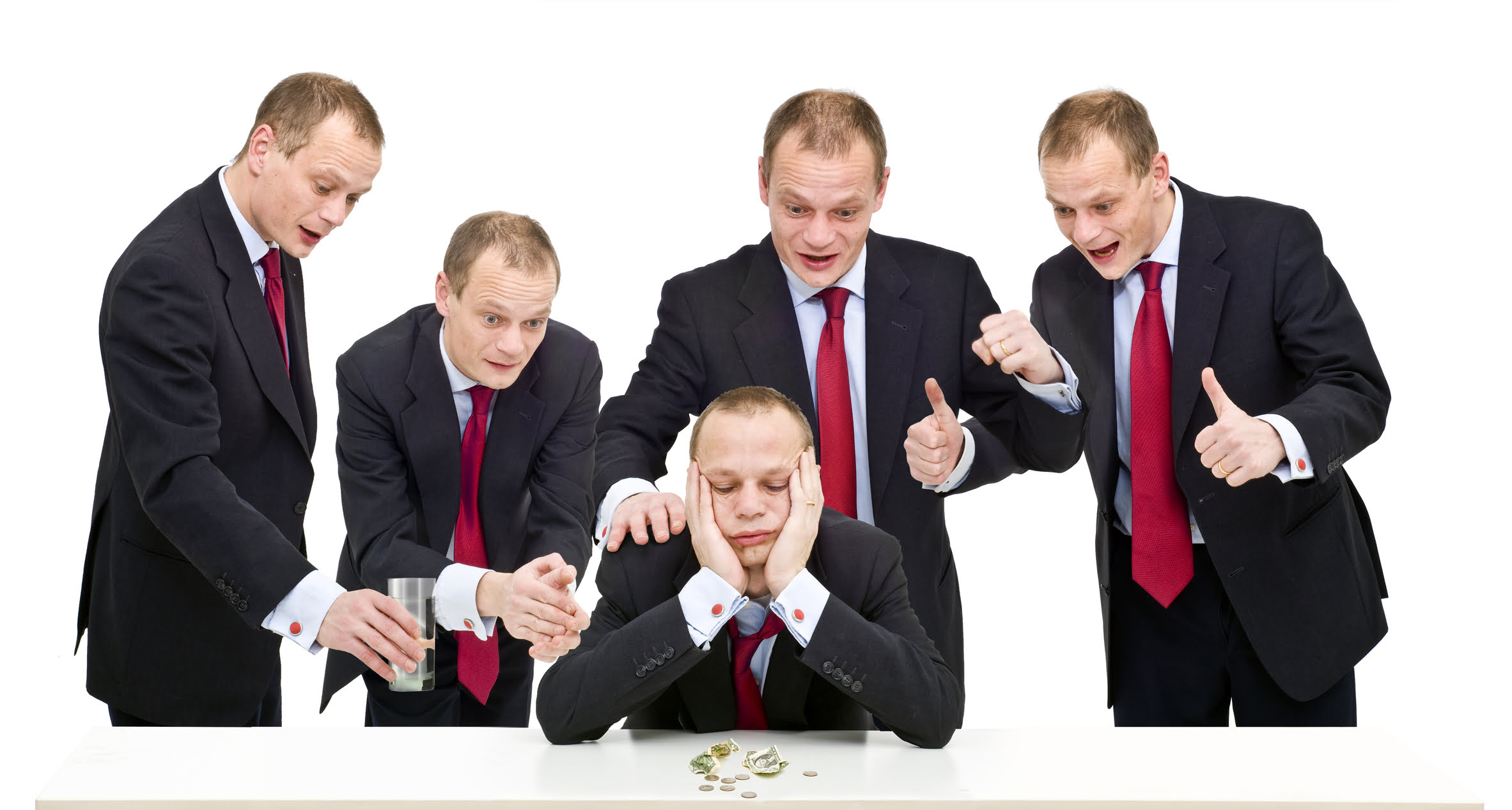Motivation is currently an important topic of discussion. It is something people seek when they feel a lack of desire towards some work or activity, want better performance from themselves, want themselves to be mentally stronger, want more focus in the pursuit of their goal, and for various other situations. But what is motivation?
According to the Merriam-Webster dictionary, ‘motive’ is defined as “something (such as a need or desire) that causes a person to act”. Motivation is the psychological process that is influenced by motive. The process of discovering one’s motive or the change in behavior due to the discovery of a motive can all be called motivation.
Motivation as a concept is pretty vague. Defining the term with one or two sentences can never truly tell the complete picture. It’s a sensation that drives human behavior and everybody is chasing after it. In this article, we will further explore ‘what is motivation?’, talk about different sources of motivation, elaborate on how it works, and why it is so important for life.
What is Motivation? Motive vs. Motivation
I have already said that motivation is the psychological process that is influenced by motive. But what does that mean? If the definition of motive is the need or desire for someone to act, then motivation is the process of feeling the need or desire that leads someone to act. The two ideas can be very similar and are correlated. But not quite the same.
Motivation can be an idea that directs human behavior. It means it is a feeling that if it exists can change the way a person acts drastically. To people, the idea of a motive itself can be motivation. For example, if a student studies hard to get good grades in exams, then the motive of the student is to get good grades. The idea of getting good grades is then motivation.
People also use motivation as a sort of ideal psychological quality that helps them fulfill their motives. For example, if the motive is to fulfill a set of tasks perfectly then motivation can be the ideal psychological presence that boosts the performance of their tasks. It can help them focus and stay more resilient throughout a task.
One could say, a motive demands action but motivation is what leads to action. This difference is key to understanding what Motivation is and why it is so important when it comes to human behavior. Without the desired result called motivation, human beings fail to operate at their maximum abilities. In that aspect, motivation can be called an optimal mental presence.
So, motivation itself is in a way a change in the psychological state that is created through the very desire for change in a particular direction while being pushed by the environment. Sometimes this comes in the form of additional confidence and sometimes in the form of some other emotions.
So, motivation can have different meanings in different contexts but the core understanding can be that it is something that stems from desire or need and it dictates human behavior.
Motivation and Psychology
To understand something, one must understand its roots. As motivation is a psychological process, it is impossible to keep the study of psychology away from the discussion of motivation. As I described motivation as an optimal mental presence, I must explore psychology to get different ideas and context on how motivation works.
The motivation of a person varies on psychological variables. The same person at different times can feel different levels of motivation. Different people with similar motives can feel different levels of motivation at the same time. Psychologists try to explain why this happens. They also dig deeper into the process.
Motivation Psychology:
Psychologists started widening the concepts of motivation psychology after conducting different behavioral and cognitive analyses. There is no single concept of motivation in psychology that describes all possible directions motivation can take and the effects it can have on human beings. But that only says how broad the topic needs to be.
Motivation psychology is a subject that studies how biological, environmental and other psychological variables contribute to motivation. The human body, the human mind, and the environment around a human control the amount of motivation a person can feel from a particular motive. This is visible through behavior, engagement, neuroscience, physiology, etc.
Observed from Behavior:
So how does motivation work? It works with intensity and presence. It has a very obvious impact on a person’s expressions, work pace, resilience, and mood. Motivation can be found from a person’s desire to be psychologically sturdy and be more decisive. Positive gestures are a sign of motivation among people.
Observed from Engagement:
The level of engagement can be a good metric for the level of motivation. A motivated person can be more open to conversing with other people, express joy in interaction, engage with interest, maintain or keep up with the flow of engagement, and most importantly enjoy the engagement. However, something like this isn’t always conclusive.
Observed from Neuroscience:
The presence of motivation can be found in brain activities. Each kind of motivation corresponds to a different pattern of neural activity. For example, Agouti-related protein neurons control hunger and hunger motivates us to eat. Equipment such as functional magnetic resonance imaging (fMRI) is used to track neural processes.
Observed from Physiology:
Motivation can bring physiological reactions out of the human body. Hormonal activities, cardiovascular activities, Ocular activities, electrodermal activities, and skeletal activities can be affected by motivation and therefore express signs of motivation. Tracking these activities through modern equipment can help to visualize motivation.
The Process of Motivation
Different kinds of motivation originate from different sorts of emotions. Ultimately we are driven by need, hope, and desire. These emotions are what motivate us. Motivation as such can be categorized in different ways based on how it originates. But we will expand on that later. For now, let’s talk about the process of being motivated.
Need, hope, and desire form a strong sense of motivation inside people that is much more powerful than motivation gained from external influence. But that doesn’t mean the former can be external influence free. Pressure arriving from social interactions can often lead to different sorts of motivation. Encouragement and consequences for example can make a difference.
Negative Emotions:
Need leads people to act. Emotions create a sense of a preferred state. When people aren’t in that preferred emotional state, they try and change that. Our brain directs us throughout the process. Our emotions add energy and passion for the entire development. The combination of all this creates the ideal environment to take action.
Positive Emotions:
Negative emotions can motivate people towards change but positive emotions can also lead people towards the desire for consistency and improved quality. This can create a loop of positive emotions that increases the chance of repetition. Each repetition itself creates a suitable environment for the next iteration of the loop.
Difficult Environment:
Difficult environments can be detrimental to one’s motivation. While a difficult environment can motivate someone to overcome their environment, failure to overcome a harsh environment can create a harsher sense of helplessness that demotivates people. Without a suitable environment, it is difficult to hold on to any sort of motivation.
Favorable Environment:
A nice environment goes a long way in terms of helping people get motivated or stay motivated. A supportive environment can help us get motivated. It can put us in a loop of positive emotion to help us stay motivated. Positive relationships around people help them maintain the best possible mental health in general which helps with motivation.
Categories of Motivation
Psychologist K.B. Madsen described motives as having 2 categories. Primary motives which serve the purpose of fulfilling biological and innate needs and secondary motives which I acquire on our own and through external influence. Primary motives are mainly about hunger, safety, and survival. A secondary motive is related to how a person grows. They are distinguishable.
The categorization of motivation can be found from the categorization of motives. There are mainly 2 kinds of motivation. They are extrinsic motivation and intrinsic motivation. Extrinsic motivation mainly comes from primary motives while intrinsic motivation can be found through secondary motives. Both categories can be divided into more sub-categories.
Extrinsic Motivation:
Extrinsic motivation is mainly created through primary motives. But not every extrinsic motivation comes from primary motives. Extrinsic motivation can also be passed on by the environment. External motivation is in effect when an external stimulus is influencing someone’s behavior. In other words, environmental factors are also responsible.
With extrinsic motivation, our desire to perform a task comes from an outside source other than our free brain. However, they usually hold some sort of reward for the one performing the task despite having an outside stimulus. That can be in the form of gratitude, financial benefits, escape from a predicament, etc. It can also come from our need for survival of course.
Extrinsic Motivation Examples:
Earning a promotion, establishing good relations for future benefits, being forced to work extra hours, Desire to eat when hungry. Bonuses, organized activities can all be categorized as extrinsic motivation. External regulations, opponent process, social bonding, etc are also examples of extrinsic motivation.
Intrinsic Motivation:
Intrinsic motivation is what makes a human being special. It is a sort of motivation that stems from a person’s independent thought process. The stimuli come from within and it is not something that always benefits an individual directly. It can also be about the benefit of others. It implies creativity, kindness, and curiosity among many emotions.
Intrinsic motivation can refer to a person’s need to get involved with something that doesn’t influence them directly. Here the task itself is the reward. It isn’t influenced by external stimuli. Instead, it originates from a person’s personal goals and desires. Intrinsic motivation can give a human being his own identity. These are what form a person’s personality.
The biggest sources of intrinsic motivation are personal beliefs and ideals. It is when people act for their beliefs that they find pleasure without benefits. Intrinsic motivation can be an expression of kindness when people want to help others without getting any reward in return. It is also what distinguishes us from other species.
Intrinsic Motivation Examples:
Fun and enjoyment are a very important source of intrinsic motivation. The fun of a challenge, the desire for acceptance, curiosity, sense of honor, sense of independence, the desire to be organized, the desire for power and social status, the desire to feel competent, the desire for achievement, etc. are all examples of intrinsic motivation.
Importance of Motivation

In this article, the importance of understanding what motivation is has been given a lot of importance. But that is relevant in the first place because of how important motivation is in terms of real-life applications. Motivation helps us move forward with efficiency. It gives us a roadmap to follow. Without motivation, there is no cohesive life.
Human Nature and Motivation:
First, let us try and understand our actions and characteristics. Human beings are social creatures who depend on one another. Because of that, we tend to care strongly about what people think of us. Therefore, getting acceptance from people can be an important motivation, and without that motivation, life can be worse.
A human being in the long term needs to care about himself. To care about himself, he needs to survive by fulfilling his basic needs. To fulfill his basic needs, he is required to remain active. To be active, one needs motivation. To live a better life people need to love themselves. The desire for self-respect, feeling of competency, etc. can be motivation for them.
Motivation and increased Performance:
Engaging in an activity with and without motivation can bring different results. If we are motivated towards some sort of activity, our brain accepts the challenges faster and responds to it quicker. Without motivation, the pacing is slower and performance is lower. Motivation gives us the extra energy to boost our performance too.
Motivation and Persistence:
Persistence is not a natural quality for everyone. Being persistent about something you do not want to do or a reward that doesn’t motivate you is extremely difficult for most people. Motivation helps people to work harder in whatever they are doing. It gives them a reason to not give up when they feel like giving up the most.
Motivation and Concentration:
Similar to persistence, it is hard to concentrate on something that doesn’t seem beneficial to you or something you do not feel like doing. Motivated helps people focus better on their tasks. Without proper motivation, focusing seems more difficult. Time management is harder as a result and procrastination become natural.
Motivation and Pathway of Life:
Life needs a roadmap to follow. If people change important decisions frequently, life has little chance of reaching a favorable destination. That is why they need to be motivated towards a goal in life. Each step of the goal can make the next step seem within reach. Without multiple small steps, the pathway of life can be hard to walk on.
Motivation and Adaptability:
Life is unpredictable and you never know what it throws at you. Adapting to the changes in life is never easy. But motivation always makes it easier. If someone is motivated to adapt and do better, they are psychologically in a better state to adapt to changes. With drive and desire, people cannot move on.
Motivation and Mental Health:
To be motivated means one is looking forward to something. It can be hope, it can be a reward, it can be a particular positive emotion. As mentioned before, positive emotions gained from motivation can form a loop and perform repetitions. Repetitions of positive emotions lead to better mental health and better health in general.
Motivation and Lifestyle:
A person who lacks motivation in life is more likely to be involved in gambling, addiction, and crime. Excessive internet usage can be a habit of someone who isn’t motivated in anything productive. Motivation is important for the fruitful use of time. It can help with more productive habits instead of a harmful lifestyle.
The Importance of Extrinsic Motivation:
Extrinsic motivation follows an already existing social structure and helps people gel into society. It drives people to work towards a reward. It directs people towards working within rules and regulations. It helps people interact with each other and try to understand one another for mutual benefits, directing towards a progressive society.
The Importance of Intrinsic Motivation:
Intrinsic motivation provides one with individuality. Concepts like curiosity and kindness become a part of one’s personality. Because of intrinsic motivations, people lean towards being honorable and independent. They find their own goals which they can strive to reach. Selfless motivation helps people see more than their benefits.
So, after all this, do you still ask why people need motivation? If so then the only thing I can tell you is that people need it to live better lives.
Characteristics of Motivation
Even though we associate motivation with good things. It is not really that simple. This is better understood by learning about the characteristics of motivation. Here are some characteristics of motivation –
It is a psychological process
Motivation is a psychological process. Fundamental needs and creative needs stimulate motivation within an individual. It changes an individual’s approach towards the activity related to the motive that is responsible for the motivation. The term itself refers more to the general behavior instead of the motive itself.
Motivation is temporary
Motivation isn’t permanent. Human desires change over time and they do not feel motivated about the same activity for too long. Failure despite motivation can lead to someone getting demotivated. A motive itself can lose power if it does its job for too long. Desires are infinite and people get motivated by different things after moving on.
Motivation is complex
Motivation cannot be seen or touched. It can only be felt. Its existence can be proved using science. It is a vague sensation that has different forms and reactions. Motivation is a complex term. At the same time, it is essential in everyday life.
Motivation is pushed by a goal
Motivation always has an ideal result as the driving force behind it. People are motivated hoping the ideal result comes to fruition. Therefore, as soon as an ideal result is there in the end, people either look for a new motivator or look to repeat the process if they can.
Motivation can be negative
Motivating someone isn’t always about making them feel nice. Sometimes a bit of tough love can motivate someone. Sometimes any sort of negative emotion results in a strong desire to make a difference. This is something that can motivate an individual.
Motivation is behavior dependent
Different people can be motivated by different things at the same time. It depends on their Behavior. Behavior is directed towards achieving goals. How long motivation lasts also depends on an individual’s behavior.
Motivation is continuous
Motivation may be temporary but it is also continuous. An individual has unlimited needs and desires. A motivating factor can no longer work but a new one can then replace it. People will always have something to be motivated by as long as they aren’t satisfied with everything. But hey, satisfaction itself is never-ending.
Motivation Cycle
Motivation is temporary yet continuous. It is a dynamic process. Motivation rises and falls relative to the environment around an individual. While motives drive people, they contribute to the ongoing process of behavior. Multiple motives at the same time can be a driving force for the individual and all of them affect his/her behavior.
Existence of a Dominant Motive: When multiple motives are at work at the same time, one motive situationally appropriate will dominate our attention and control our behavior the most. Other motives at this point will be relatively dormant and become subordinate motives. With the passage of time and circumstance, a subordinate motive can take over the dominant role.
Steps in Motivation Cycle: When talking about the dominant motive of a particular time, that motive can influence the behavior of an individual in cycles. The first step is feeling the need. Next, the need drives the individual towards some sort of activity. Then the individual feels an incentive to work towards a reward. After the reward, he reverts to the stage of need.
Need: This is a product of physical or psychological deprivation. We feel some sort of need when our body or mind doesn’t have something it wants. A constant need can make the need a weaker driving force. Need prefers a state of equilibrium where there is a balance to the fulfillment of need at just the right intensity.
Drive: Drive is created by the need. It is an internal state of motivation. Drive directs behavior towards the fulfillment of the need. Drive doesn’t go away until one is satisfied. It creates a state of tension within the individual to try and fulfill the need. It can produce more than one response.
Incentive: Incentive is the next stage of the motivation cycle. It can be seen as an appropriate object or situation towards the goal. Incentive eases the need and reduces drive. It can have a positive result as well as a negative result based on what is used as an incentive.
Reward: Reward is the state of achievement of the incentive. Feelings like satisfaction or pleasure are self-rewarding. Reward restores the state of equilibrium. After this stage is reached, the reward resets into either the same or a different need.
Example of a Motivation Cycle: The cycle starts with one or more motives and picks a dominant one according to the circumstance. If we pick 2 needs such as hunger and the desire to learn, hunger will be dominant as one cannot best utilize learning when hungry. So hunger will get preference in that situation and the cycle will start.
So, in this example, hunger is the need and it creates a drive for physical fulfillment. The feeling of hunger can be our drive to fulfill hunger. Now we look for an Incentive and in such a case food is the incentive. Based on what we eat the incentive can be negative or positive. Candy will not fulfill hunger and is an example of a negative incentive.
As for a positive incentive, cooked food can do the job as it has a better chance of conquering hunger. When cooked food is eaten in the right quantity, hunger can be overcome and one reaches the reward which is fulfillment. A new need then becomes the dominant motive. So according to this example, learning becomes the new dominant motive and restarts a cycle.
Sources of Motivation
Sources of motivation can be innumerable. However, there are always a few common sources of motivation to highlight.
External Incentive: External rewards are a powerful source of motivation. It focuses on short-term results instead of long-term ones though.
Avoiding a Bad Situation: Just as the idea of a reward can be motivating, the fear of punishment or the creation of some sort of bad situation can also motivate one to avoid those situations.
Inspiration: Inspiration is very sought after. It is a powerful source of motivation. When everything seems dull and gloomy, a bit of inspiration can make the world of difference and turn things around 180 degrees to motivate someone.
Self-Validation: Everyone wants to find some sort of worth in themselves. The path to self-validation can motivate people. People think better of themselves when they have achievements to show. So, they are motivated when they want to feel better about themselves.
Curiosity: Curiosity is a very strong intrinsic motivation. It is creative and gives an individual personality. Curiosity isn’t limited and explores many different topics.
Image: The desire for a good image and mass acceptance can make someone work hard. It is a strong source of motivation as it is in human nature to feel accepted.
Power: Man prefers to have the power to control his destiny. The desire for that sort of power can be a strong source of motivation. The ability to control more is always a thing of greed for human beings.
Conclusion
‘What is motivation?’ is a complicated question to answer. It is recommended that the reader picks up a book on the psychology of motivation if the desire for more information is still there. As for now, I can only hope this article was helpful to the readers and they were able to find the information required to find their source of motivation. Good luck!










